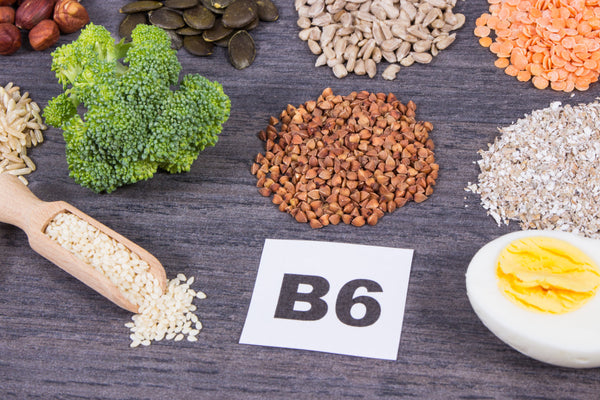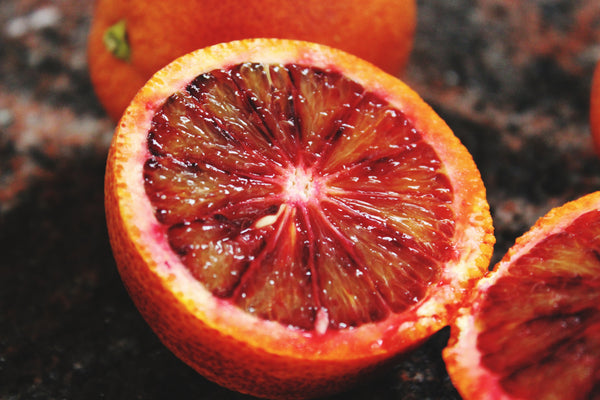
15 Iron-Rich Foods, Intake Recommendations, and Main Benefits

Are you getting enough iron-rich foods in your diet right now? Iron is a trace mineral found in every living cell in our body.
It is the main component of two proteins: hemoglobin and myoglobin. Hemoglobin is the part of the red blood cells that carry oxygen to the tissues of the body while myoglobin is the part of the muscle cells that hold oxygen.
According to the Centers for Disease Control and Prevention, iron deficiency is the most commonly known form of malnutrition. The best way to make sure you don't lack these essential nutrients is to eat iron-rich foods in sufficient quantities every day.
Read: Let’s Make Sure the Baby has Enough Iron, It’s Important!
Recommended Intake
The amount of iron you need varies by age. According to the U.S. Office of Disease Prevention and Health Promotion (ODPHP), the recommended daily iron amounts are as follows:
- Infants under 12 months old: 11 mg
- Children aged 1-4 years: 7 mg
- Adults and children over 4 years old: 18 mg
- Pregnant and lactating women: 27 mg
Iron-Rich Foods
What foods are high in iron? Here are healthy iron-rich foods, including meat, fish, nuts, nuts, vegetables, and even some fruits.
1. Spirulina
1 ounce: 8 milligrams (44 percent DV)
Spirulina is a well-known blue-green alga with a strong taste and with a strong nutritional profile. It's one ounce provides almost half of the typical iron requirement.
When it comes to vegetarians, a non-heme source of iron, spirulina is its best food source. It is also rich in essential amino acids, iron, protein, B vitamins, and vitamins C, D, and E.
2. Heart
3 ounces organic beef liver: 4.05 milligrams (22.5 percent DV)
When it comes to foods with iron, in particular, heme iron (a more easily absorbed form), the liver definitely ranks at the top.
If you're struggling with any kind of anemia – a clear sign of iron deficiency – this is probably the best food to eat as it contains iron as well as folate and vitamin B12.
3. Grass-Eating Beef
One grass-fed lean strip steak: 4 milligrams (22 percent DV)
Grass-fed beef is another wonderful source of red meat from heme iron as well as many other essential nutrients and it becomes a favorite of many people when it comes to iron-rich foods. In addition to iron, grass-fed beef also has higher precursors of vitamins A and E, along with cancer-fighting antioxidants, compared to grain-fed beef.
4. Lentils
cups: 3.3 milligrams (20.4 percent DV)
Lentils are nuts that have a very impressive amount of non-heme iron per serving. In addition to their high supply of nutrients, they are also very cheap and very versatile.
5. Dark Chocolate
1 ounce: 3.3 milligrams (19 percent DV)
When buying high-quality dark chocolate, you give your body a significant dose of iron. All you need is an ounce to meet nearly 20 percent of your daily iron needs. Well, that's one of the healthy dessert options!
6. Spinach
cooked cups: 3.2 milligrams (17.8 percent DV)
There is a good reason why Popeye becomes stronger when he eats spinach. These green leaves are loaded with iron as well as many other essential nutrients. As one of the top sources of plant-based iron, spinach is delicious raw or cooks it. When you cook it, you tend to eat more because it cooks too much, which means more iron per spoon.
7. Sardines
1/4 cup: 1.8 milligrams (10 percent DV)
In terms of the nutrition of sardines, these small fish are perhaps most famous for their high concentration of omega-3 fatty acids and vitamin D, but they are also a significant source of heme iron. It's easy to find canned sardines at very affordable prices in most grocery stores. Try adding a variety of other food options such as sauces, salads, and pasta dishes.
8. Black beans
cup: 1.8 milligrams (10 percent DV)
Black beans are rich in iron as well as protein and fiber. Black beans provide "time-released" energy in the form of starch, making them an excellent carbohydrate source for anyone with prediabetes, diabetes, or insulin resistance.
9. Pistachios
1 ounce: 1.1 milligrams (6.1 percent DV)
Pistachios are nutrient-dense and a great choice for those looking for healthy snack ideas to lose weight and control weight. Just one ounce, or 49 pistachio seeds (typical portion size), provides high levels of iron as well as vitamin B6 (25 percent DV), thiamine (20 percent DV), and copper (20 percent DV). Pistachios are also one of the best sources of iron.
10. Raisins
1/4 cup: 1.1 milligrams (6.1 percent DV)
One of the interesting things about the nutrition of raisins is the very high iron content per serving, especially for fruit. Other sources of fruits that contain iron include plums and figs.
11. Pumpkin Seeds
1 ounce: 0.9 milligrams (5 percent DV)
Versatile, delicious, and full of nutrients, pumpkin seeds are one of the best sources of iron available. Plus, adding these flavored seeds to your diet can also increase your intake of several other essential nutrients, including fiber, magnesium, and zinc.
Simply bake and season with the seasoning of your choice for a delicious snack, or add it to salads, sauces, and baked goods.
12. Eggs
Top 1: 0.9 milligrams (5 percent DV)
Eggs are one of the main sources of heme iron, packing 5 percent of the daily value into one egg. In addition to being one of the best iron-rich foods for children and adults, eggs contain protein, selenium, riboflavin, vitamin B12, and phosphorus.
13. Chickpeas
1/2 cup: 2.4 milligrams (13 percent DV)
Chickpeas not only earn a place on the list of the healthiest legumes and vegetables, but also one of the best high-iron foods that you can add to your diet.
These energy-rich legumes also offer a variety of other nutrients, offering a good amount of manganese, folate, and copper in each serving.
Chickpeas are a great addition to curries, salads, pasta dishes, and sandwiches and can help take almost any recipe to the next level in terms of nutrition.
14. Kale
1 cup raw: 1.1 milligrams (6 percent)
Often hailed as a true superfood, it's no surprise that kale is also a wonderful source of iron. And in addition to being one of the foods rich in iron, kale is also high in fiber, vitamin K and vitamin A.
Plus, it's full of vitamin C, which can help boost iron absorption, even more, to ensure you're getting the most out of it.
15. Chicken
3 ounces cooked: 0.9 milligrams (5 percent)
Like other meat and poultry breeds, chicken is not one of the best foods rich in iron. This meat is also one of the easiest for us to include in our diet and becomes a great addition to soups, stews, salads, sandwiches, and much more.
In addition, chicken is one of the best iron-rich foods for babies who switch from breast milk to food. However, be sure to chop or shred thoroughly and mix it with mashed vegetables or liquid to make sure it is soft enough for your baby.





